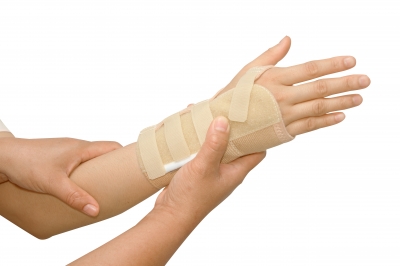What is tendonitis?
Written by: Paul Kochoa, PT, DPT, OCS, CKTP, CGFI
Tendonitis is the inflammation of a tendon. The tendon is a connective structure that connects the muscle to the bone. Tendonitis is an overuse injury that can cause pain and limited function. Treatment usually focuses on finding out the cause of the inflammation, reducing the inflammation and pain, and finally remodeling the tendon’s connective tissue.
Tendonitis can occur in any place in the body, but the most common types of tendonitis that physiotherapist see are: rotator cuff tendonitis, lateral epicondylitis, patellar tendonitis, achilles tendonitis, and posterior tibialis tendonitis. As you can see from this list, it can be in any joint from the shoulder, to all the way down to the ankle and foot.
Regardless of the location of the problem, it’s treated the same, because the mechanism of injury is the same: overuse. When a tendon is repeatedly put under excessive strain or force without ample recovery time, it basically works overtime. This overtime work results in microtears in the connective tissue fibers of the tendon, resulting in the inflammation.
First step is to identify what’s causing the overtime tendon work. When you do, it generally means that you have to stop what you’ve been doing or correct a defective movement pattern or posture. This reduces the stress on the tendon and leads into the second step which is to reduce the inflammation. This step can include medication from your physician, or it can mean physiotherapy interventions such as the Graston Technique, cross friction massage, ice, phonophoresis, or iontophoresis (this is when medication is administered to the tendon via sound waves or electrical current, both of which allow the medication to pass through the skin and get into the tendon).
Afterwards, the next step is to remodel the tendon. With the exacerbating activity identified and the inflammation reduced, it’s time to get back to work or sports activity. Here, the physiotherapist can prescribe several exercises that can correct dysfunction positioning or movement to reduce stress on the tendon. This can include eccentric exercise and stretching to maintain tendon strength and flexibility. The eccentric exercise will increase the tendon’s tensile strength and increase its ability to withstand the amount of force that originally caused the tendonitis.
If not checked early, tendonitis can progress to tendinosis which is harder to resolve. Tendinosis is the breakdown of the structures in the tendon. Actually, inflammation of a tendon or tendonitis only lasts a couple days, but by the time you seek medical attention for pain, it can be weeks… So the issue is more commonly due to tendinosis rather than tendonitis.
Recovery from tendonitis can take up to 6 weeks, but recovery from tendinosis can take up to 6 months. The trick is to identify the problem early and get treatment early.
If you would like more information, please call Professional Physical Therapy and Training at 973-270-7417. Our offices are located within the YMCA locations in Madison and Summit, NJ. You do not need to be a member of the YMCA to visit with us.
Image courtesy of Praisaeng / FreeDigitalPhotos.net
